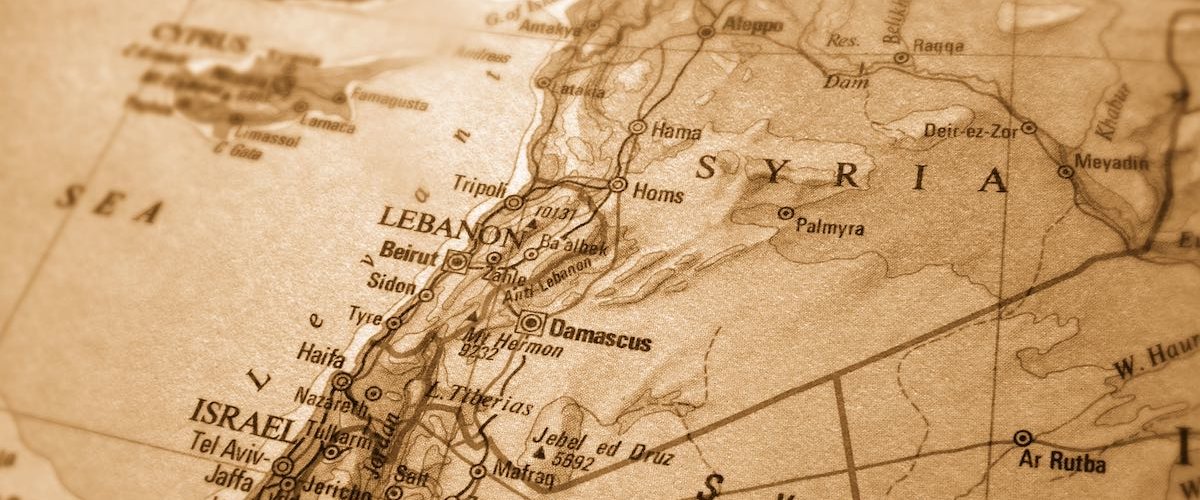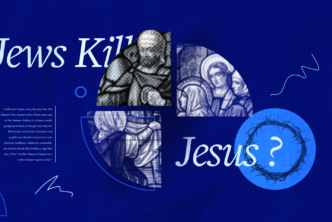People often wonder about Gog and Magog in the Bible (Ezekiel 38–39). God tells Gog and Magog he will “put hooks into your jaws, and I will bring you out, and all your army, horses and horsemen, all of them clothed in full armor, a great host, all of them with buckler and shield, wielding swords” (38:4).
Earlier in the chapter, Ezekiel indicates Gog and Magog will drag many other nations into a devastating battle against the kings of the South:
Cush and Put will be with them, all with shields and helmets, also Gomer with all its troops, and Beth Togarmah from the far north with all its troops—the many nations with you. (Ezek 38:5–6)
Who are Gog and Magog? Is it a person? A place? And what are the modern-day nations that equate to biblical Cush, Put, Gomer, Beth Togarmah?
Below are resources to help you dig deeper into End Times, prophecy, and the books of the Bible related to Gog and Magog. Then explore the excerpt below adapted from Mike Heiser’s book The Unseen Realm about how ancient Hebrews would have understood the supernatural idea of a northern foe.
Resources on the End Times, Ezekiel, and Revelation
Mysterious Gog and Magog
Two passages in Scripture have cemented Gog and Magog in our minds when we think of the apocalypse: Ezekiel 38–39, and Revelation 20. Both passages reference a figure named Gog and a huge army that attacks the people of God.
- Through the prophet Ezekiel, God says to Gog (of the land of Magog), “You will come from your place in the far north, you and many nations with you, all of them riding on horses, a great horde, a mighty army. You will advance against my people Israel like a cloud that covers the land.” (Ezek 38:15–16)
- Toward the end of our Bible, John the Revelator sees in a vision: “When the thousand years are over, Satan will be released from his prison and will go out to deceive the nations in the four corners of the earth—Gog and Magog—and to gather them for battle. In number they are like the sand on the seashore.” (Rev 20:7–8)
These prophecies are well-known and much-disputed. There’s plenty of debate over who Gog is, what Magog represents, and what these prophecies ultimately refer to.
But are we modern readers missing something that the original readers would have naturally picked up on?
A Hebraic perspective of this foe from the north
The prophetic description in Ezekiel 38–39 of the invasion of “Gog, of the land of Magog” (Ezek 38:1–3, 14–15) is well known and the subject of much interpretive dispute, both scholarly and fanciful. One of the secure points is that Gog will come from “the heights of the north” (38:15; 39:2).
While many scholars have focused on the literal geographic aspects of this phrasing, few have given serious thought to its mythological associations in Ugaritic/Canaanite religion with Baal, lord of the dead.
An ancient reader would have looked for an invasion from the north but would have cast that invasion in a supernatural context. In other words, the language of Ezekiel is not simply about a human invader or human armies.
Where it all started
The epic saga of the Bible began with God’s intention to rule over his new creation through humans, all the while being present with his heavenly host. In Eden, heaven had come to earth.
Of course, it all went awry in the wake of God’s decision to grant freedom to his imagers, both divine and human. The decision was necessary, for the creature could not truly be like the creator without sharing this attribute: the ability to truly exercise free will and choose between loyalty and rebellion.
What seems to us to be a long, drawn-out divine plan to restore that which was fallen was equally necessary. It might seem that God could have just stepped in after the fall and eliminated free will, along with the divine and human rebels who had abused it. Eden would be ensured and that would be that.
While that would produce the desired end, the original means—free participation in God’s creation by God’s free-will agents, designed to be like him—would have been abandoned, amounting to a very flawed idea and spectacular failure. A resolution like that isn’t fitting (or desirable) for the God of the Bible. God’s original objective must come about in the way he intended.
Earthly geography, as many historians have pointed out, is a key part of human destiny. For ancient Israelites, geography had both literal and supernatural qualities.
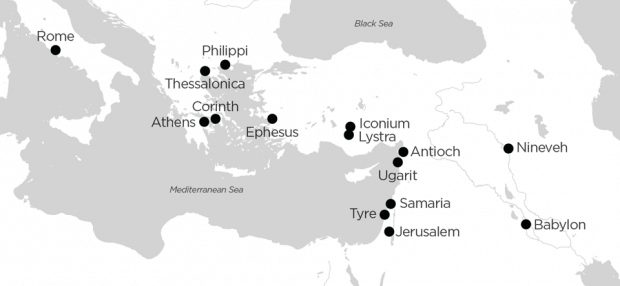
Literal geographical north: harbinger of doom
Because it sat on the eastern Mediterranean Sea, Canaan found itself sandwiched between the homelands of ancient Near Eastern civilizations that would vie for control of the entire region: Egypt and Mesopotamia. Canaan, and therefore the people of Israel, would find itself being invaded from the north and south by foreign armies on the move. It would be occupied as a buffer zone between competing powers.
The Bible records several such incidents. But the most traumatic incursions into Canaan were always from the north:
- In 722 BC Assyria invaded from the north to conquer the 10 tribes of the northern Israelite kingdom and deported them to many corners of its empire.
- In a series of three invasions from 605 to 586 BC, Babylon moved in from the north and destroyed the southern kingdom, comprising only two tribes, Judah and Benjamin.
The trauma of these invasions became the conceptual backdrop for descriptions of the final, eschatological judgment of the disinherited nations (Zeph 1:14–18; 2:4–15; Amos 1:13–15; Joel 3:11–12; Mic 5:15) and their divine overlords (Isa 34:1–4; Ps. 82).
It is hard to overstate the trauma of the Babylonian invasion. The northern tribes, too, had met an awful fate, the outcome of which was well known to the occupants of the kingdom of Judah. But Judah was David’s tribe, and Jerusalem the home of Yahweh’s temple. As such, the ground was holy and would surely never be taken by the enemy—or so the kingdom of Judah thought.
Zion’s inviolability turned out to be a myth. Jerusalem and its temple were destroyed by Nebuchadnezzar in 586 BC. The incident brought not only physical desolation but psychological and theological devastation.
The destruction of Yahweh’s temple and, consequently, his throne, would have been cast against the backdrop of spiritual warfare by ancient people. The Babylonians and other civilizations would have presumed that the gods of Babylon had finally defeated Yahweh, the God of Israel. Many Israelites would have wondered the same thing—or thought that God had forsaken his covenant promises (e.g., Psa 89:38–52). Either God was weaker than Babylon’s gods or else he had turned away from his promises.
Prophets like Ezekiel, Daniel, and Habakkuk, raised up by God during the exile, had a different perspective. Yahweh had summoned foreign armies who served other gods to punish his own people. Yahweh was in control. Spiritual disloyalty was what had led to the situation.
The sinister, supernatural north
The word “north” in Hebrew is tsaphon (or zaphon in some transliterations). It refers to one of the common directional points. But because of what Israelites believed lurked in the north, the word came to signify something otherworldly.
The most obvious example is Bashan, which was also associated with Mount Hermon. In Jewish theology, this is where the rebellious sons of God of Genesis 6 infamy descended to commit their act of treason.
But there was something beyond Bashan—farther north—that every Israelite associated with other gods hostile to Yahweh. Places like Sidon, Tyre, and Ugarit lay beyond Israel’s northern border. The worship of Baal was central in these places. These cities of Phoenicia and Syria were Baal’s home turf. The fact that the center of Baal worship was just across the border was a contributing factor in the apostasy of the Northern Kingdom of Israel.
Specifically, Baal’s supposed home was a mountain, now known as Jebel al-Aqraʿ, situated to the north of Ugarit. In ancient times it was simply known as Tsaphon (“north”; Tsapanu in Ugaritic). It was a divine mountain, the place where Baal was believed to hold council as he ruled the gods of the Canaanite pantheon. Baal’s palace was thought to be on “the heights of Tsapanu/Zaphon.”
Baal was outranked only by El in Canaanite religion. However, Baal ran all of El’s affairs, which explains why Baal was called “king of the gods” and “most high” at Ugarit and other places. In Ugaritic texts, Baal is “lord of Zaphon” (baʿal tsapanu). He is also called a “prince” (zbl in Ugaritic). Another of Baal’s titles is “prince, lord of the underworld” (zbl baʿal ʾarts). This connection to the realm of the dead, of course, dovetails with our discussion of the themes associated with the serpent figure from Genesis 3. It is no surprise that zbl baʿal becomes Baal Zebul (Beelzebul) and Baal Zebub, titles associated with Satan in later Jewish literature and the New Testament.
In short, when an Israelite thought of the north in theological terms, he or she thought of Bashan, Mount Hermon, and Baal. Later Jews would have made connections to the serpent, the great adversary of Genesis 3.
This backdrop will help us understand how Jews living in the latter parts of the Old Testament period on through the Second Temple period and the New Testament era thought about end times—the time of God’s final judgment of evil and the ultimate restoration of his rule. But for that we need to start with the concept of exile.
Israel still in exile
One of the great misconceptions of biblical study is that the return of the Jews from Babylon in 539 BC and the years following solved the problem of Israelite exile. It didn’t. The prophets had envisioned the return of all 12 tribes from where they had been dispersed. That didn’t happen in 539 BC or any other time framed by the Old Testament.
Jeremiah 23:1–8 is one of the clearest examples of this expectation:
“Woe to the shepherds who destroy and scatter the flock of my pasture,” declares Yahweh. Therefore thus says Yahweh, the God of Israel concerning the shepherds who shepherd my people, “You yourselves have scattered my flock, and you have driven them away, and you do not attend to them. Look, I will punish you for the evil of your deeds,” declares Yahweh. “Then I myself will gather together the remnant of my flock from all the lands where I have driven them, and I will bring them back to their grazing place, and they will be fruitful, and they will become numerous. And I will raise up over them shepherds, and they will shepherd them, and they will no longer fear, and they will not be dismayed, and they will not be missing,” declares Yahweh.
“Look, days are coming,” declares Yahweh,
“when I will raise up for David a righteous branch,
and he will reign as king, and he will achieve success,
and he will do justice and righteousness in the land.
In his days Judah will be saved,
and Israel will dwell in safety,
and this is his name by which he will be called:
‘Yahweh is our righteousness.’“Therefore look, days are coming,” declares Yahweh, “when they will no longer say, ‘As Yahweh lives, who led up the Israelites from the land of Egypt,’ but ‘As Yahweh lives, who led up, and who brought the offspring of the house of Israel from the land of the north and from all the lands where he had driven them.’ Then they will live in their land.”
Verse 3 is explicit—Yahweh promises to bring back his people from all the places where they have been scattered. Both kingdoms, Judah and Israel, will one day be brought back to the land (v. 6). The specific note that “the house of Israel” will be returned from “the land of the north” and “all the lands” where they were dispersed is an unambiguous reference to the first captivity of the ten “lost tribes” of Israel.
Other passages are clear in this regard, as well. In Ezekiel 37, the famous vision of the dry bones, Yahweh says,
Son of man, take a stick and write on it, “For Judah, and the people of Israel associated with him”; then take another stick and write on it, “For Joseph (the stick of Ephraim) and all the house of Israel associated with him.” And join them one to another into one stick, that they may become one in your hand. And when your people say to you, “Will you not tell us what you mean by these?” say to them, “Thus says the Lord GOD: ‘Behold, I am about to take the stick of Joseph (that is in the hand of Ephraim) and the tribes of Israel associated with him. And I will join with it the stick of Judah, and make them one stick, that they may be one in my hand.’ When the sticks on which you write are in your hand before their eyes, then say to them, “Thus says the Lord GOD: ‘Behold, I will take the people of Israel from the nations among which they have gone, and will gather them from all around, and bring them to their own land.'” (Ezek 37:16–21)
Again, both Israel and Judah are mentioned, and Yahweh’s people will be gathered from the nations (note the plural) to which they have been dispersed.
What this means is that Jews living in the time of Jesus saw the nation as still being in exile. Ten of the tribes had not yet returned (and many Jews had stayed in Babylon when given the chance). Was Yahweh going to deliver them? Could the powers of darkness be finally overcome?
Israel’s deliverance—and opposition
Part of the reason Jews expected a military deliverer in their messiah comes from what the prophets had taught. They believed that the regathering of all the tribes of Israel and Judah went hand in hand with the appearance of a great messianic shepherd-king.
Ezekiel 37, the passage we just looked at that described the restoration of all the tribes, adds this element:
My servant David shall be king over them, and they shall all have one shepherd. They shall walk in my rules and be careful to obey my statutes. They shall dwell in the land that I gave to my servant Jacob, where your fathers lived. They and their children and their children’s children shall dwell there forever, and David my servant shall be their prince forever. I will make a covenant of peace with them. It shall be an everlasting covenant with them. And I will set them in their land and multiply them, and will set my sanctuary in their midst forevermore. (Ezek 37:24–26)
In terms of biblical theology, this expectation was fulfilled in the inauguration of the kingdom of God and at Pentecost. Not only was the reclamation of the disinherited nations launched at that event, but it was accomplished by means of pilgrim Jews from all the nations in which they had been left in exile, now converted to faith in Jesus, the incarnate Yahweh, and now inheritors of the Spirit and the promises of the new covenant.
As Paul said in Galatians 3, anyone who followed Christ was a true offspring of Abraham—Jew or gentile. Jews from every nation of exile had returned to the land to serve as catalysts for a greater regathering, the apostolic mission of the Great Commission. In Ephesians 4 Paul had cast Pentecost as the defeat of Bashan, the region to the north, ground zero for spiritual warfare in Israelite thinking. If we thought only in terms of Pentecost, it would look as if the dark lord of the dead (Baal Zebul)—identified with Satan by this time—was beaten.
But that would be a premature conclusion. It also wouldn’t work with what followed Ezekiel 37’s deliverance-from-exile and coming-shepherd-king prophecy. In the wake of all that good news, trouble would come—from the north.
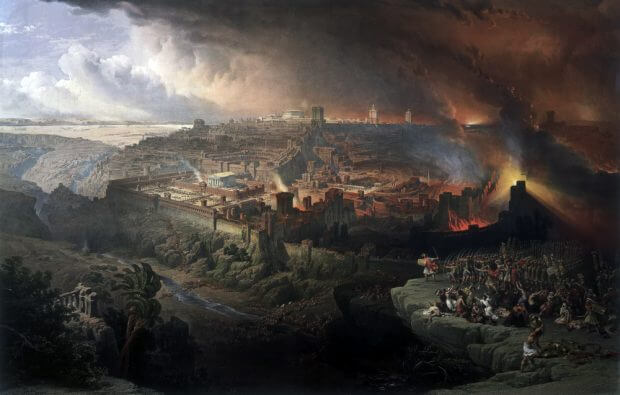
Who are Gog and Magog in the Bible?
So what does all this have to do with Ezekiel’s prophecy regarding Gog and Magog?
An ancient reader would have noticed that this invasion would come at a time when the tribes had been united and dwelt in peace and safety within the promised land—in other words, once the period of exile had ended.
The battle of Gog and Magog would be something expected after the initiation of Yahweh’s plan to reclaim the nations and, therefore, draw his children, Jew or gentile, from those nations. The Gog invasion would be the response of supernatural evil against the messiah and his kingdom. This is in fact precisely how it is portrayed in Revelation 20:7–10.
Gog and the antichrist figure
Gog would have been perceived as either a figure empowered by supernatural evil or an evil quasi-divine figure from the supernatural world bent on the destruction of God’s people. For this reason, Gog is regarded by many biblical scholars as a template for the New Testament antichrist figure.
The foe-from-the-north theme is also picked up in Daniel 11, a passage that many scholars believe in some way relates to the antichrist. Daniel’s eschatological foe is connected to the north many times.
The known invasion of Jerusalem by Antiochus IV (Epiphanes) in 167 BC follows many elements that are detailed in Daniel 11. Antiochus attacked from the north (he was from the northern, Seleucid Empire in Asia Minor). He committed the abominable act of profaning the temple by sacrificing a pig on the altar (cf. Dan 9:24–27) and made Jewish customs such as circumcision punishable by death.
These offenses started a rebellion in Jerusalem that led to a short period of Jewish independence. Therefore, those who saw the Gog enemy in Antiochus may also have been led to think of the new Jewish independent state as the final kingdom of God. History informs us clearly that it wasn’t. Moreover, despite the elements of precision noted by scholars between the invasion of Antiochus IV and Daniel 11, there are clear contradictions between the record of Antiochus’s invasion and parts of Daniel 11.
Nearly two centuries later, Jesus still regarded the prophecy of the abomination of desolation (Dan 9:24–27) as yet to come (Matt 24:15–21). Regardless of the Antiochus issue, his association with the northern foe of Daniel 11 nevertheless shows us that the foe-from-the-north motif is important. Later, Jewish rabbis and early Christian scholars paid close attention to it.
While Magog and “the heights of the north” aren’t precisely defined in the Gog prophecy, the point is not about literal geography per se. Rather, it is the supernatural backdrop to the whole “northern foe” idea that makes any such geographical reference important.
For sure ancient Jews would expect that the reconstituted kingdom of Yahweh would be shattered by an enemy from the north—as it had before. But ancient Jews would also have thought in supernatural terms. A supernatural enemy in the end times would be expected to come from the seat of Baal’s authority—the supernatural underworld realm of the dead, located in the heights of the north. Gog is explicitly described in such terms.
But there is another, similar thought trajectory in ancient Judaism and the early Church that has been noted by scholars: The antichrist would come from the tribe of Dan, located in Bashan.
The heart of the idea emerges from Genesis 49, part of the messianic mosaic. The right to rule Israel is linked to the tribe of Judah, and the one who holds its scepter is a “lion” (Gen 49:9–10). In contrast (Gen 49:17), Dan is referred to as a serpent, fitting imagery for Bashan, who “judges” his own people.
Deuteronomy 33:22 picks up the theme: “Dan is a cub of a lion; he leaps from Bashan.” Dan is an upstart inferior, who will attack from Bashan. Dan is thus an “internal outsider,” an enemy of Yahweh’s people. Those who interpreted these references in this way were also quick to point out that Dan is omitted from the list of tribes that yield the 144,000 believers in Revelation 7.
How should we interpret passages about Gog and Magog in the Bible today?
All eschatological systems are speculative in many respects. The point is that the supernatural worldview of ancient Israel and Judaism must inform our thinking. The cosmic enemy from the supernatural north, where the council of evil plotted against Yahweh’s council, was a fixed part of the worldview of the biblical writers—especially when it comes to the end times.
Related articles
- The Elohim: What (or Who) Are They?
- 14 Sobering Facts about Satan, the Devil
- God Wasn’t Alone before He Created the World (Says the Bible)
- Who (or What) Were the Nephilim?
- What Really Happened at the Tower of Babel?
- The Name of Yahweh and the Angel of the Lord
Books by the author
The Unseen Realm: Recovering the Supernatural Worldview of the Bible
Regular price: $17.99
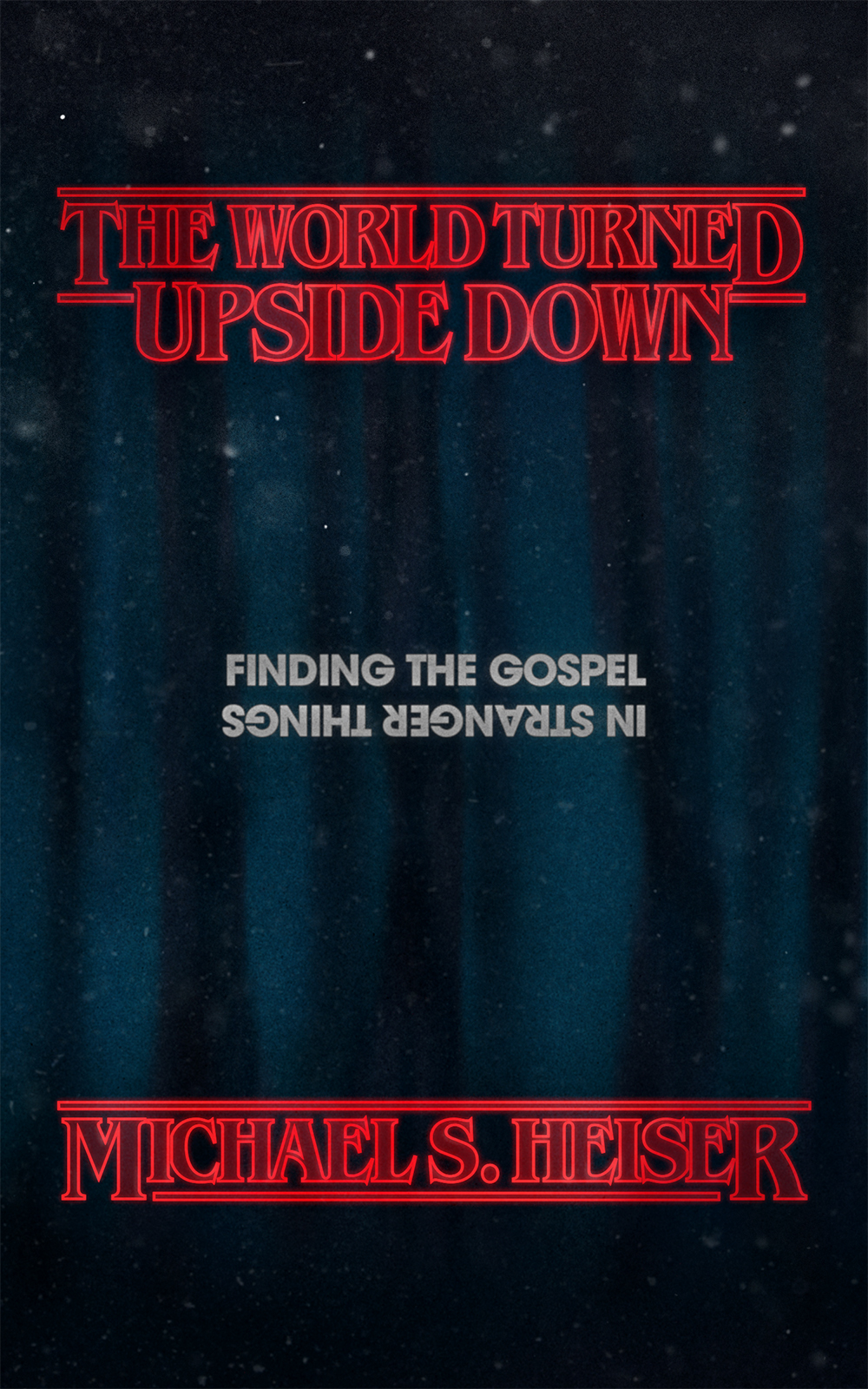
The World Turned Upside Down: Finding the Gospel in Stranger Things
Regular price: $8.99

